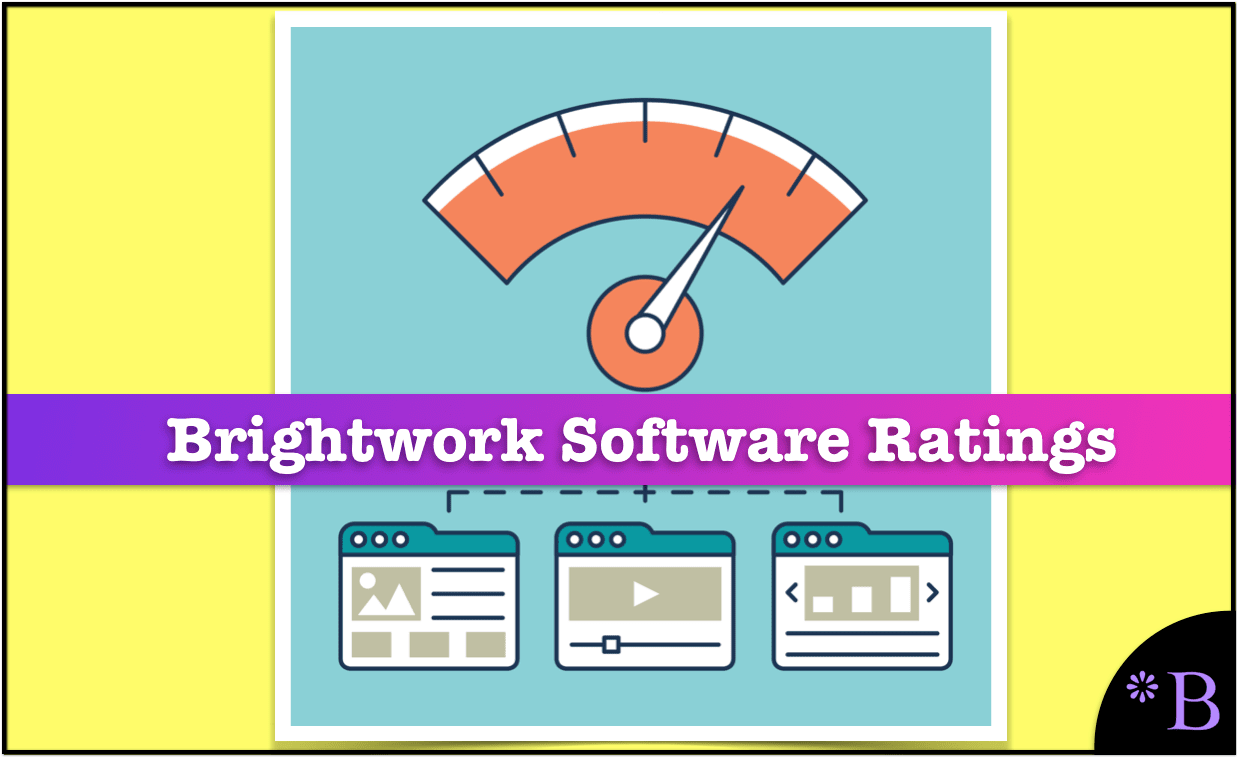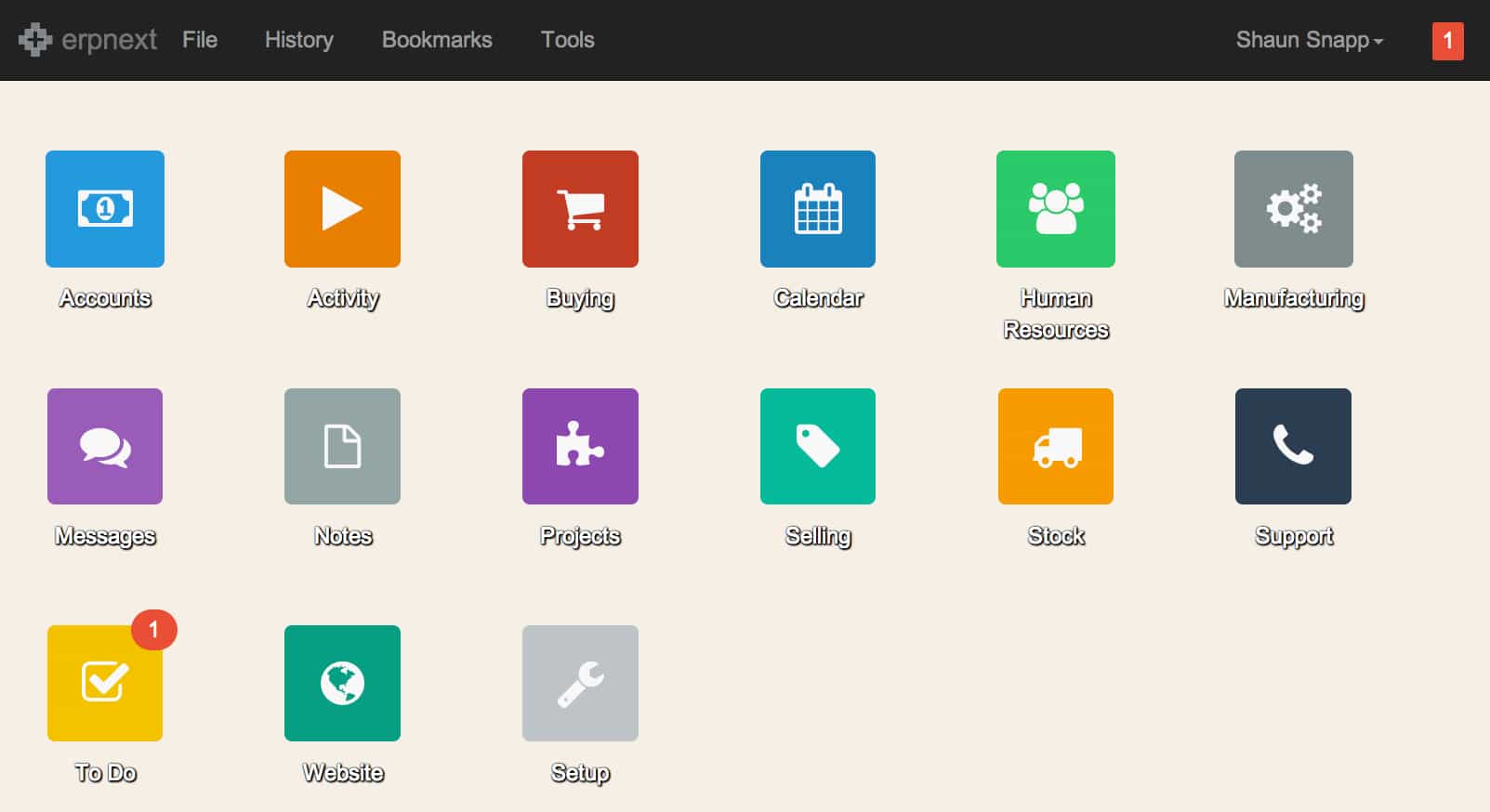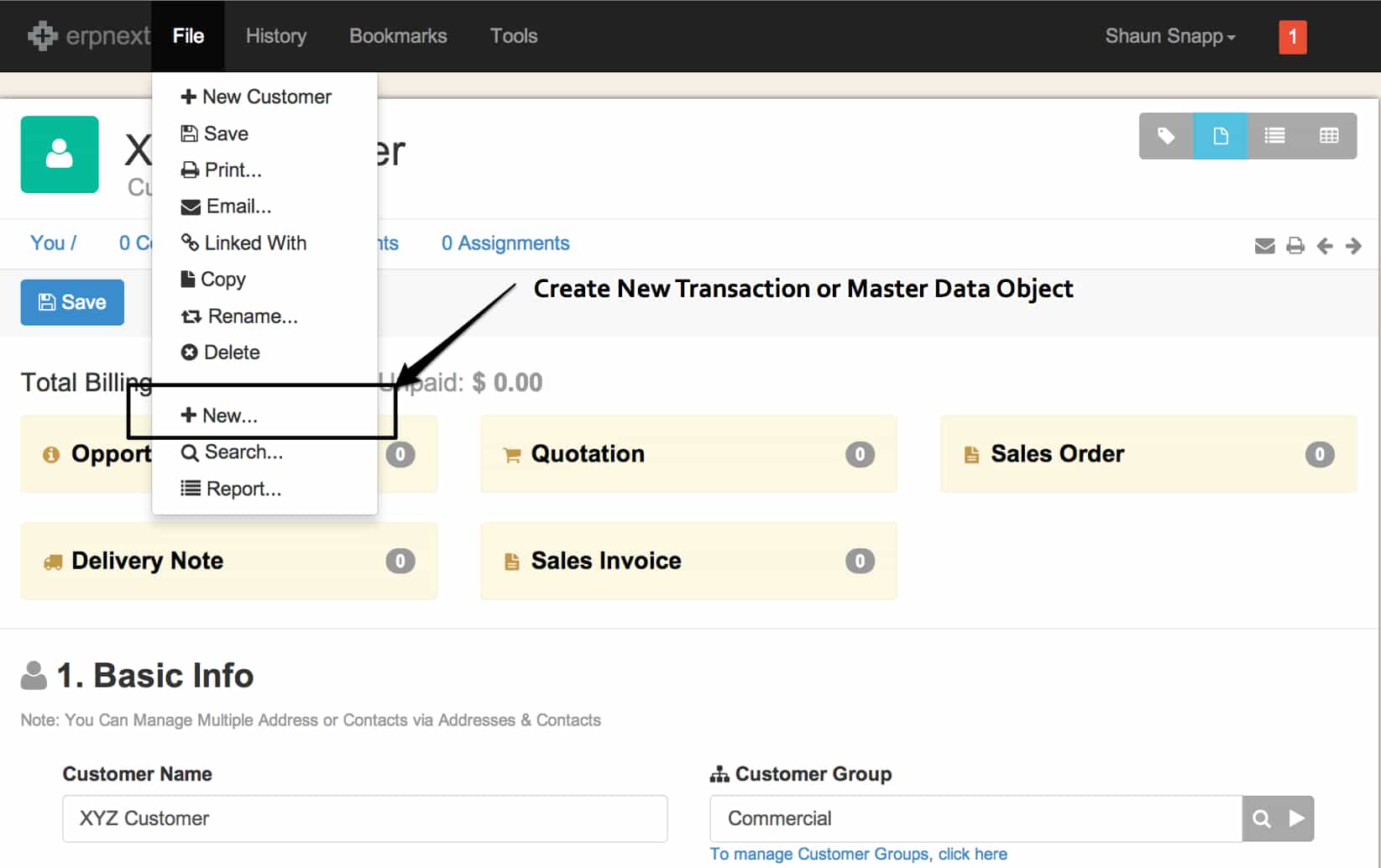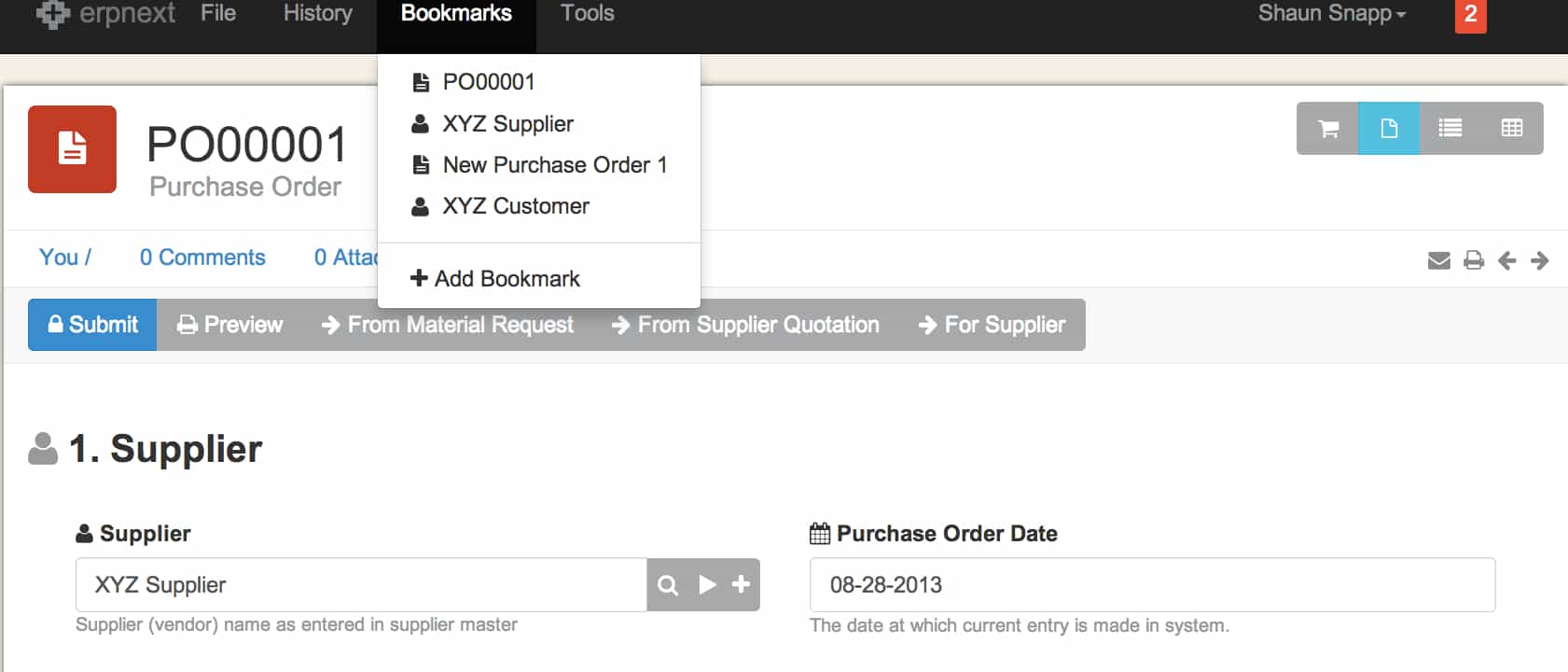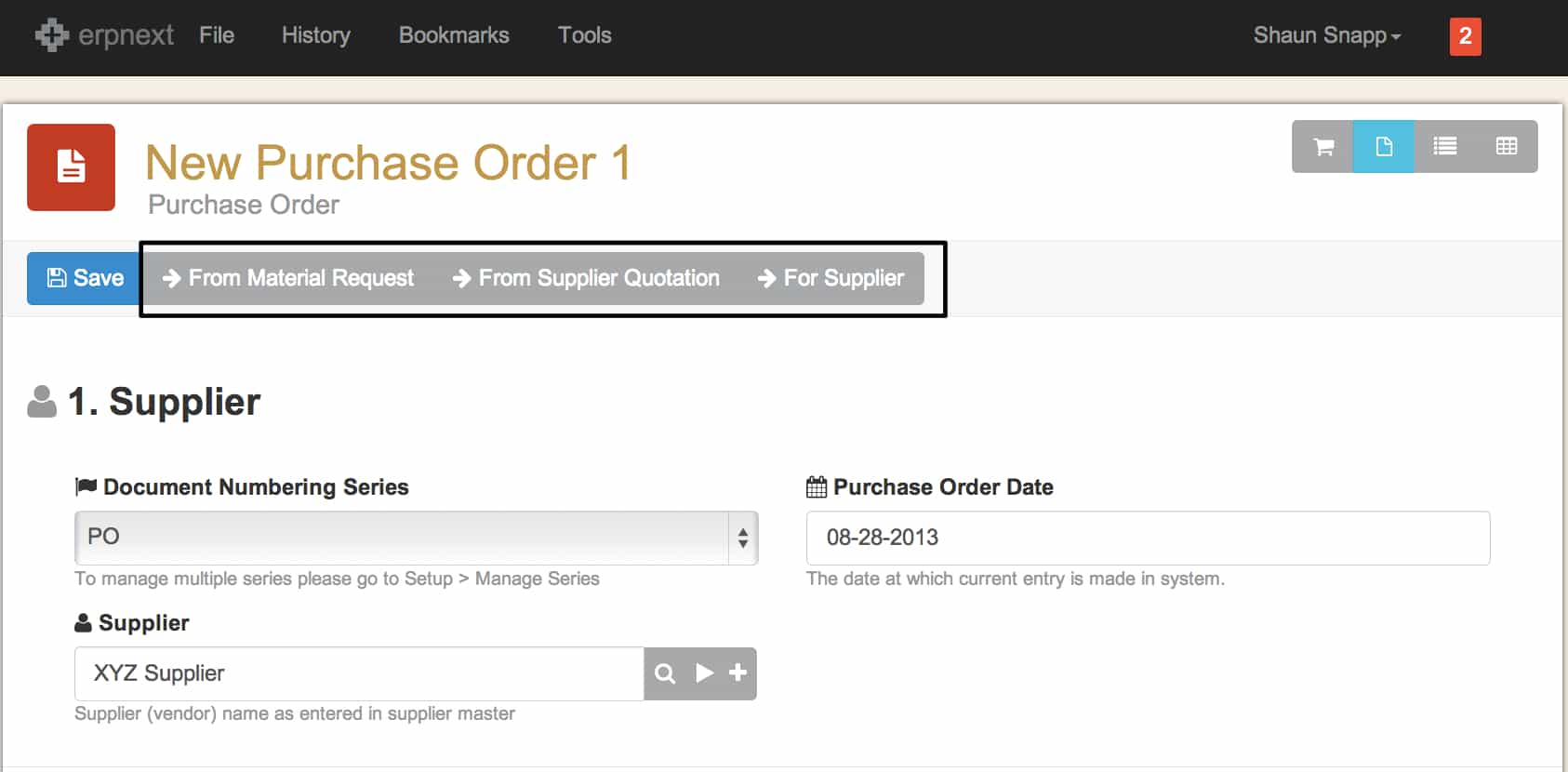Executive Summary
- This is the Brightwork Research & Analysis software rating series.
- We rate both the software and estimate the risk of implementing each application.
MUFI Rating & Risk for ERPNext
MUFI: Maintainability, Usability, Functionality, Implement ability
Vendor: ERPNext (Select For Vendor Profile)
Introduction
ERPNext is a young and up and coming ERP system which is primarily delivered through SaaS. ERPNext is easily the value leader in the ERP space – which of course does not mean that it is the best ERP system for every situation – but if ERPNext can meet a buyer’s business requirements, it offers a tremendous value as is explained in our TCO calculator for ERPNext.
Application Detail
ERPNext is an open source ERP software vendor. ERPNext truly stands out in term of usability and the potential for very high adoption rates. Of all the ERP systems that we have evaluated, ERPNext has the best user interface and is one of the few user interfaces that actually show the user where they are in the process. If working in SAP ECC is the type of experience that can make one hate their job, ERPNext has the type of user interface where its hard to tell you are working. ERPNext has won some open source awards, but we hope they win one in the future for both user interface design as well as configuration design. Some of the specific features of these areas of the application we believe are unique to ERPNext.
This company offers SaaS and service, full support/onboarding help, up to 10GB storage space and regular updates for roughly $600 per year. ERPNext could not do this unless they had built an extremely low maintenance application, and we predict this price will increase as ERPNext becomes better known. In fact, if we were advising ERPNext, we would probably tell them to increase the price, for two reasons. One is that very inexpensive software vendors tend not to be taken seriously, and considering the outstanding job that ERPNext has done in developing their application they deserve more money. Of course, if ERPNext keeps their price low, they could very quickly get hot and become a go-to application for small companies that are price sensitive. Smaller companies tend to purchase ERPNext hosting, so the “unlimited” aspect of service General Motors or Coke Cola has not yet been tested.
This is an ERP system that even smallest company can afford. It also has probably the most clearly written ERP user manual we have ever read. While inexpensive, ERPNext has the feel of a quality application, in fact, a level of quality that many far more expensive applications with much more business press coverage cannot match. ERPNext is also quite intuitive to use – in fact, we rate it as the best user interface in the ERP software category – that is of any ERP system, tier 1, 2 or 3. It also has some features we would like to point out. One of these is how ERPNext has several ways to navigate around the application to perform tasks.
The first way is to simply use the dashboard. ERPNext has a simple and attractive dashboard, which will then take the user where they need to go. This is quite common, and several open source ERP applications have the same thing.
However, ERPNext has something we have not seen before in any application. With most ERP applications, you must navigate to a specific area before doing anything. In SAP ERP this is accomplished with typing in a transaction – which is a four digit alphanumeric code such as SE16. I have a list of transaction codes for SAP APO at this link.
https://www.brightworkresearch.com/sapplanning/trans-codes/
ERP systems have a lot of functionality, and traditionally one of the major weaknesses of ERP applications has been the difficulty in navigating to the area that is required efficiently. ERPNext allows a way for any transaction of the master data element to be accessed from a single drop down. This is called the “New” button and can be accessed from any area in the application by selecting the File menu item and then the New button. This is demonstrated in the following screen shot.
When selected a long scrollable list appears. This addresses one of the main weaknesses of ERP systems, in that they are difficult to navigate. This one feature makes ERPNext one of the best ERP systems regarding navigation because any adjustment to the system is just two mouse clicks away from any screen the user is currently within. As a person who has spent many years navigating through ERP systems the “old bad” way, this approach is a revelation. And this is not the end of how ERPNext has improved ERP navigation as the next screenshot will show.
ERPNext has included two innovations in its bookmarks. In SAP ERP, one can create a bookmark for a specific transaction, but then the details of that transaction must be entered. This means the details must be written down or remembered, or there is some search that must take place before the correct record can be returned. ERPNext not only places the Bookmark function on the main menu – meaning it can be accessed from any screen without going back to the introductory menu screen, but the ERPNext Bookmark function can be used to go to not only the transaction, but also to the specific record in the transaction. In fact, notice that the general transaction of “New Purchase Order 1,” which is the general transaction for creating a new purchase order, is in the same Bookmark menu as “PO00001,” which is a specific purchase order that just created. This means that the user does not have to write down or remember their previous transactions. This is another major boon to navigation efficiency, and is a best practice for any application, but is in particular well suited to an ERP system, which requires a great deal of navigation for both making change as well as checking the status of transactions.
We can stay in the same purchase order transaction to demonstrate another excellent ERPNext feature, which is the Find function. Here I need to find a supplier to assign to a new purchase order. I can see the current database of suppliers by selecting the magnifying glass icon to the right of the input box, and can then search by various characteristics. Here I am searching by the Supplier Name. There is currently only one supplier setup in the system, called XYZ Supplier so that I will select this for my new purchase order. However, if I had a long list of suppliers, I could restrict the list by simply typing in the first several letters of the supplier name, or choose another characteristic of the supplier, and also type in the first few letters of that characteristic. List filtering like this is one of the most important features the controls the productivity of an ERP user. Too many ERP systems require that the user scrolls through lists of various master data when quick filtering like this is greatly preferable. Most ERP systems have search or find functions, which work similarly, but ERPNext search works extremely smoothly. This feature, along with the navigation features I have described up to this point are indicative that ERPNext would have a high productivity level and a far better productivity level than any ERP software from the big ERP software vendors.
ERPNext provides application intelligence to the user by proving the options, which are available in a clear way. In the new purchase order transaction, the following options are shown at the top of the screen: From Material Request, From Supplier Quotation, For Supplier. This means that the user does not have to remember or guess exactly all the ways that a purchase order can be created, but instead is told right within the transaction, a this is a consistent feature of ERPNext for all of its transactions.
There is enormous productivity implications for software that naturally works, and software that ostensibly has some search functionality, but for which the actual usability of the functionality is low. This is one of the most important misunderstood features of software selection, which similar functionality on paper often has great differences in productivity in actual usage.
ERPNext along with OpenERP are two of the easiest ERP systems to implement. Neither are implemented by the major consulting companies, and much of the consulting hours are remote, and intermittent greatly reducing the costs.
ERPNext is one of the most intriguing applications in the enterprise software space. The only fault we can find with the application is the broadness of its functionality, but even at is current functionality it is one of the best values in enterprise software. Right now it is mostly suitable for small to smaller medium-sized companies, but with ERPNext’s high developer productivity, we would not be surprised if ERPNext can easily handle the mid-sized market. It is worth a very serious look. Even buyers that do not choose ERPNext should be evaluated ERPNext to see the most usable ERP system that currently exists.
MUFI Scores
All scores out of a possible 10.
MUFI Scores
- Ma. = Maintainability
- Us. = Usability
- Fu. = Functionality
- Im. = Implementability
| App | Ma. | Us. | Ft. | Im. | Cat. |
|---|---|---|---|---|---|
| Average Score for Big ERP | 5.1 | 4.8 | 5.2 | 5.4 | Big ERP |
| Average Score for CRM | 6.2 | 6.2 | 5.1 | 5.9 | CRM |
| Average Score for Small and Medium ERP | 8.3 | 8 | 6.7 | 8.5 | Small and Medium ERP |
| Average Score for Finance | 8.8 | 8.8 | 8 | 8.8 | Finance |
| Average Score for Demand Planning | 7.6 | 7.2 | 7 | 7.1 | Demand Planning |
| Average Score for Supply Planning | 6.7 | 6.9 | 7 | 6.8 | Supply Planning |
| Average Score for Production Planning | 6.8 | 6.9 | 7 | 6.9 | Production Planning |
| Average Score for BI Heavy | 5.5 | 5.3 | 6.9 | 5.3 | BI Heavy |
| Average Score for PLM | 7 | 7.2 | 6.8 | 7.3 | PLM |
| Average Score for BI Light | 7.7 | 8.7 | 9 | 8.3 | BI Light |
| Arena Solutions Arena PLM | 10 | 10 | 10 | 10 | PLM |
| AspenTech AspenOne | 4 | 8 | 10 | 7 | Production Planning |
| Birst | 8 | 8.5 | 10 | 8 | BI Light |
| ERPNext | 10 | 10 | 7.5 | 10 | Small and Medium ERP |
| Delfoi Planner | 8 | 6 | 6.5 | 7 | Production Planning |
| Demand Works Smoothie SP | 9 | 10 | 7 | 10 | Supply Planning |
| Hamilton Grant RM | 10 | 9 | 8.5 | 9 | PLM |
| IBM Cognos | 2.7 | 3 | 1.5 | 3 | BI Heavy |
| Infor Epiphany | 7 | 8 | 6 | 5 | CRM |
| Infor Lawson | 8 | 7 | 6 | 7 | Big ERP |
| Intuit QuickBooks Enterprise Solutions | 9 | 9 | 5 | 9 | Finance |
| JDA DM | 9 | 7.5 | 8 | 8 | Demand Planning |
| Microsoft Dynamics CRM | 2 | 3 | 2 | 2 | CRM |
| NetSuite CRM | 6 | 4 | 3 | 3 | CRM |
| Netsuite OneWorld | 7 | 7 | 8 | 8 | Big ERP |
| OpenERP | 7 | 8 | 8.5 | 8 | 7 |
| Oracle BI | 4 | 4 | 3 | 6 | BI Heavy |
| Oracle CRM On Demand | 4 | 5 | 3 | 5 | CRM |
| Oracle Demantra | 5 | 3 | 3.5 | 4.5 | Demand Planning |
| Oracle JD Edwards World | 4 | 1 | 3 | 6 | Big ERP |
| Oracle RightNow | 6 | 7 | 4 | 5 | CRM |
| PlanetTogether Galaxy APS | 10 | 10 | 10 | 10 | Production Planning |
| Preactor | 8 | 7 | 3 | 7 | Production Planning |
| QlikTech QlikView | 9 | 9 | 10 | 9 | BI Light |
| Rootstock | 9 | 8 | 9 | 9 | Small and Medium ERP |
| Sage X3 | 8 | 8 | 7 | 8 | Big ERP |
| Salesforce Enterprise | 8 | 8.5 | 9 | 7.5 | CRM |
| SAP APO DP | 3 | 4 | 3 | 2 | Demand Planning |
| SAP APO PP/DS | 2 | 2 | 4 | 3 | Production Planning |
| SAP APO SNP | 3 | 4 | 8 | 4 | Supply Planning |
| SAP BI/BW | 1.5 | 2 | 4 | 2 | BI Heavy |
| SAP Business Objects | 3 | 2.5 | 7 | 3 | BI Heavy |
| SAP CRM | 4 | 3 | 6 | 4 | CRM |
| SAP ECC | 3 | 3 | 6.5 | 3 | Big ERP |
| SAP PLM | 1 | 2.5 | 2 | 3 | PLM |
| SAP SmartOps | 4 | 4 | 7 | 5.5 | Supply Planning |
| SAS BI | 6.5 | 7 | 9 | 6 | BI Heavy |
| SAS Demand Driven Forecasting | 7 | 8 | 9 | 7 | Demand Planning |
| Tableau (BI) | 9 | 10 | 10 | 10 | BI Light |
| Tableau (Forecasting) | 10 | 8 | 5 | 9 | Demand Planning |
| Teradata | 8 | 6.3 | 9.7 | 6 | BI Heavy |
| ToolsGroup SO99 (Forecasting) | 7 | 8 | 9 | 7 | Demand Planning |
| ToolsGroup SO99 (Supply) | 5 | 6 | 10 | 7 | Supply Planning |
Vendor and Application Risk
ERPNext is either the simplest or one of the top two simplest ERP applications to implementation to implement. Its exceptional user interface and configuration mean that it takes little specialization to implement the software. For that with experience with Quickbooks OnLine – it has a similar feel regarding how it is setup. ERPNext can only afford to offer support and hosting for ERP system because the application is as close as it gets to self-service.
Likelihood of Implementation Success
This accounts for both the application and vendor-specific risk. In our formula, the total implementation risk is application + vendor + buyer risk. The buyer specific risk could increase or decrease this overall likelihood and adjust the values that you see below.
Likelihood of Application Implementation Success and Failure
Search for the application in this table using the search bar in the upper right of the table.
| Application | Prob of Implementation Success | Prob of Implementation Failure |
|---|---|---|
| Actuate | 0.77 | 0.23 |
| SAP Smartops | 0.39 | 0.61 |
| NetSuite CRM | 0.46 | 0.54 |
| Sugar CRM | 0.62 | 0.48 |
| Base CRM | 0.91 | 0.09 |
| SAP CRM | 0.35 | 0.65 |
| Salesforce Enterprise | 0.72 | 0.28 |
| QlikTech QlikView | 0.82 | 0.18 |
| Tableau (BI) | 0.98 | 0.02 |
| SAP Crystal Reports | 0.46 | 0.54 |
| Brist | 0.83 | 0.17 |
| MicroStrategy | 0.7 | 0.3 |
| SAS BI | 0.76 | 0.24 |
| Oracle BI | 0.35 | 0.65 |
| IBM Cognos | 0.23 | 0.77 |
| Infor Epiphany | 0.58 | 0.42 |
| Microsoft Dynamics CRM | 0.26 | 0.74 |
| Oracle RightNow CRM | 0.41 | 0.59 |
| Oracle CRM On Demand | 0.36 | 0.64 |
| Teradata | 0.76 | 0.24 |
| SAP Business Objects | 0.32 | 0.68 |
| SAP BI/BW | 0.25 | 0.75 |
| SAP PLM | 0.29 | 0.71 |
| Hamilton Grant RM | 0.89 | 0.11 |
| Arena Solutions | 0.96 | 0.04 |
| Delfoi Planner | 0.7 | 0.3 |
| Preactor | 0.64 | 0.36 |
| PlanetTogether Galaxy APS | 0.96 | 0.04 |
| AspenTech AspenOne | 0.55 | 0.45 |
| SAP APO PP/DS | 0.27 | 0.73 |
| Demand Works Smoothie SP | 0.93 | 0.07 |
| ToolsGroup SO99 (Supply) | 0.82 | 0.18 |
| Demand Works Smoothie | 0.96 | 0.04 |
| Tableau (Forecasting) | 0.9 | 0.1 |
| SAS Demand Driven Forecasting | 0.82 | 0.18 |
| ToolsGroup SO99 (Forecasting) | 0.86 | 0.14 |
| JDA DM | 0.57 | 0.43 |
| Oracle Demantra | 0.33 | 0.67 |
| SAP APO DP | 0.28 | 0.72 |
| FinancialForce | 0.92 | 0.08 |
| Intacct | 0.98 | 0.02 |
| Intuit QB Enterprise | 0.8 | 0.2 |
| ERPNext | 0.9 | 0.1 |
| OpenERP | 0.78 | 0.22 |
| Rootstock | 0.91 | 0.09 |
| ProcessPro | 0.93 | 0.07 |
| Microsoft Dynamics AX | 0.4 | 0.6 |
| SAP Business One | 0.49 | 0.51 |
| Sage X3 | 0.62 | 0.38 |
| Infor Lawson | 0.58 | 0.42 |
| Epicor ERP | 0.4 | 0.6 |
| Oracle JD Edwards World | 0.31 | 0.69 |
| Oracle JD Edwards EnterpriseOne | 0.36 | 0.64 |
| SAP ERP ECC/R/3 | 0.32 | 0.68 |
| NetSuite OneWorld | 0.65 | 0.35 |
Risk Definition
See this link for more on our categorizations of risk. We also offer a Buyer Specific Risk Estimation as a service for those that want a comprehensive analysis.
Finished With Your Analysis?
To go back to the Software Selection Package page for the Small and Medium ERP software category. Or goto this link to see other analytical products for ERP Next.
